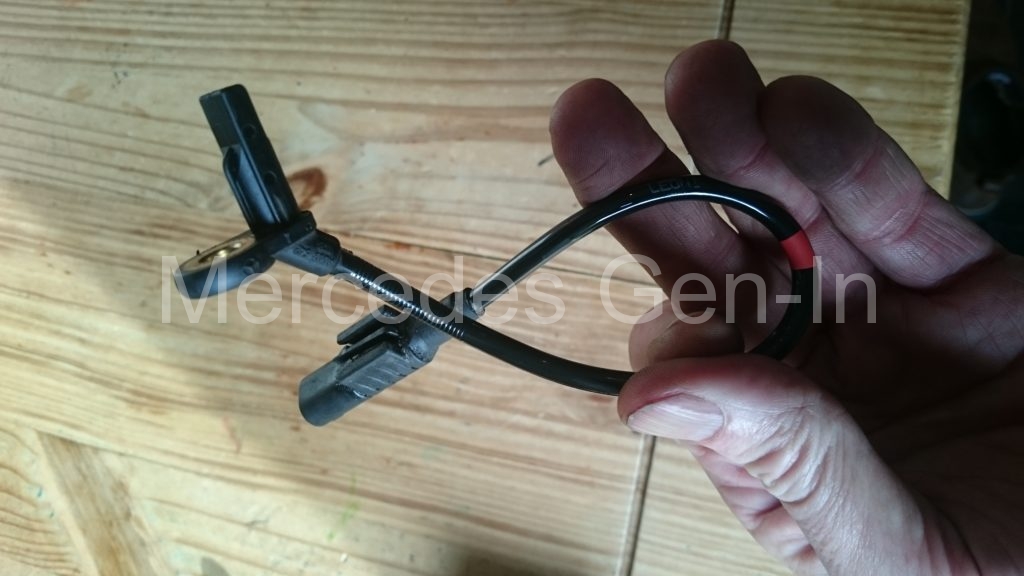Investigating a problem with a good friends Mercedes ML MY2006 320CDI who had noticed a heavy tapping noise from the engine under under anything above moderate load. It sounded expensive
Just like a top end rattle similar to a noise which would be if there if there was an issue with a piston, little-end or ring/gudgeon. Nothing could be heard at idle, which was odd in itself. Lifting the engine revs slowly, whilst stationary, would result in a smooth increase in RPM without the accompanying tapping noise. He reported that performance was down a little too, feeling that top end maximum speed would be unattainable, he was right.
I noticed the service indicator was illuminated on the dash and the mileage rested at some 3500 miles over when the oil should have been routinely dropped. Still, dirty oil alone wouldn’t usually cause a sound like this, but we needed a baseline to work with. A full engine service was carried out, including the twin air filters which frankly looked like leafy undergrowth! The diesel filter was replaced, filling the new one to the brim with a branded diesel system cleaner. The owner had already added ‘in-tank’ cleaners, thinking it could be an injector related noise but without a positive result. Once the neat diesel cleaner had been forced through the direct injector system the car was taken out for a test drive. The noise was still apparent, whenever you pushed the pedal in determination, there would be a tapping soundtrack running parallel to the normal induction noise of the engine.
I started thinking about the noise. Although the tapping was following the RPM rotations of the engine it was not every rev. It was audibly about half the frequency of the indicated RPM on the tacho. As a 4 stroke engine (Diesel or Petrol) does 2 full revolutions per combustion cycle, it was easy to determine it was either injector or valve related. It was highly unlikely that a con rod little end would only knock once every two revolutions of the engine, especially as the forces on the piston would be either dragging it up or down the bore, changing linear direction twice per revolution. I know that sometimes noises only occur on the power stroke when forces are a maximum, but this noise was far lighter than you would expect from a bearing surface that was failing or wearing oval.
The above video illustration explains nicely what I mean. It was most probably an issue with something valve or cam related or as the owner had wondered, an injector.
I dug a little deeper into the engine, removing the plenum and air filter housings to physically inspect the injectors with a good torch. I was looking for the infamous ‘Black Death’ (see video linked below) that often plagued more commonly the earlier 4 and 5 cylinder diesel types as you would see in the T1N Sprinter and many MB passenger cars of the time. The Mercedes OM642 V6 power plant has been known to suffer similar issues with combustion gasses leaking past the injector seals, in some cases making a clicking/tapping sound under load and causing a hard, often shiny black carbon build up around the mating surfaces of where the injector body enters the head (injector pocket)- nothing found!
After running the ML for a few more miles there would be occasions where the tapping-under-load noise would mysteriously disappear. That was great news. Noise from the mechanical failure of a con rod, piston or camshaft would not usually come and go, so that narrowed the field splendidly.
More ‘Italian tune-up’ accelerations and driving style where conditions allowed, over the following week in the hands of ML’s owner, saw the noise diminish and vanish completely over a period of about 10 days.
So, what was it!
I suppose we will never know for sure, but here is my view:
Considering all of the above, noise and lack of sparkling performance, it could have been either – A sticking hydraulic tappet that was suffering from the lack of lube from dirty or plain old worn-out oil, or the lifter just not filling to full pressure due to sludge etc?
Or was it a dirty Piezo diesel injector that was simply misfiring and not performing correctly under load?
This tale goes to illustrate that you should always give a little time to your diagnosis before jumping in with both feet and undertaking what could well turn out to be costly, fruitless unnecessary work.
Everyone was happy with the outcome on this occasion. My advice: Look, listen, make some changes, WAIT a while and observe!


